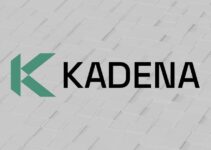Market Reaction: Mining Stocks Surge on Large-Scale AI Spend
Shares of public crypto miners jumped sharply in early trading following an announcement that a major cloud provider plans to invest up to $50 billion in AI infrastructure for government and enterprise clients. The move has refocused investor attention on firms that operate large-scale, grid-connected power sites, pushing some mining stocks up as much as 20% in a single session.

Market data showed a broad sector advance, with a sizeable group of listed miners posting double-digit gains. The spike underscores how rapidly demand for AI compute — and the electricity to power it — is reshaping capital allocation and strategic partnerships across digital-asset and data-center sectors in 2025.
Why AI Spending Benefits Mining Operators
Several industry dynamics explain why heavy AI investment gives established mining operators a newfound edge:
- High power demand: Large AI clusters require sustained, high-density electricity loads that mirror the consumption profile of mining sites.
- Grid integration: Many miners already operate grid-ready facilities with substations, long-term energy contracts and experience managing variable loads.
- Speed to market: Repurposing or dual-using existing sites offers a faster route to capacity than building greenfield data centers from scratch.
- Geographic footprint: Mining campuses in power-rich regions have become attractive locations for colocated AI hardware.
These factors have led companies on both sides to explore collaborations that pair compute-hungry AI clients with operators that can reliably supply megawatts at scale.
Notable Capacity and Deal Flow
Market observers point to several large transactions and capacity commitments this year that highlight the trend. One mining operator secured access commitments worth nearly $9.7 billion with a major cloud buyer, and multiple announcements collectively point to more than a dozen gigawatts of potential AI-ready capacity being marshalled across existing mining campuses.
In aggregate, U.S.-listed mining operations now control roughly 14 gigawatts of installed power capacity — a significant pool of energy-anchored real estate that AI developers and hyperscalers are actively eyeing for rapid expansion.
Energy, Financing and Policy: The 2025 Backdrop
The pivot by miners comes against a complex macro and policy backdrop.
- Post-halving economics: Following the 2024 block reward halving, traditional mining revenue streams tightened, prompting operators to diversify their revenue mix.
- Capital markets access: Hyperscale AI builders and cloud providers have tapped bond markets heavily, raising sizeable sums to finance chip purchases and data-center construction.
- Export controls and supply constraints: Restrictions on advanced chip exports in recent years have altered procurement strategies, increasing the incentive for domestic capacity buildouts.
- Grid limitations and energy sourcing: Slow transmission upgrades and tight local capacity have pushed firms toward sites with existing high-power hookups and toward direct agreements for generation and storage.
Analysts estimate that the private and public sectors could channel hundreds of billions into AI and cloud infrastructure in the coming years, with longer-term studies suggesting trillions of dollars of cumulative investment into AI-related technologies and facilities by 2030.
Debt-Financed Expansion and Energy Strategy
2025 has seen a marked shift from cash reserves to debt financing among large tech and cloud players. Issuers have placed multibillion-dollar bonds to accelerate capacity buildouts, reflecting the capital-intensive nature of AI infrastructure.
At the same time, companies are seeking secure energy supplies to support these loads. Strategies include:
- Direct power purchase agreements (PPAs) with generators
- On-site generation and gas-fired peaking plants in certain regions
- Long-term energy trading and wholesale market access
- Investment in energy storage to smooth demand and curtail costs
These arrangements improve predictability for both miners and AI users and make high-capacity sites more investable.
How Miners Are Adapting Their Business Models
Public mining companies are increasingly repositioning themselves as energy infrastructure operators rather than pure proof-of-work validators. Key shifts include:
- Offering staged access to rack and power capacity for AI clients
- Deploying hybrid operations that can switch between mining and compute workloads
- Negotiating long-term capacity contracts with non-crypto tenants
- Investing in grid services and ancillary products to monetize resilience features
These strategic changes aim to smooth revenue volatility tied to cryptocurrency price swings and mining difficulty cycles while leveraging existing capital expenditures in land, substations and transmission access.
Case Study: Rapid Repurposing
Several sites that were originally designed for dense mining operations have been repurposed or adapted to host AI racks with minimal incremental civil work. The economics are compelling when the alternative is building new campuses with multi-year permitting and construction timelines.
For AI organizations seeking rapid scale-up in 2025, access to shovel-ready, grid-connected sites can accelerate deployment timelines by months or even years.
Risks and Challenges
Despite the upside, bridging the mining and AI markets entails risks:
- Regulatory scrutiny: Authorities may assess whether dual-use facilities comply with regional energy, environmental and security regulations.
- Technical integration: AI workloads have different cooling, latency and networking needs than mining rigs, requiring investments in infrastructure upgrades.
- Contract certainty: Long-term commercial arrangements must balance seasonal power price volatility and rare but consequential grid events.
- Public perception and ESG: Energy-intensive operations attract scrutiny; firms must demonstrate strong emissions management and renewable sourcing where feasible.
Market participants are pursuing solutions — from renewable PPAs to battery energy storage systems (BESS) and emissions offsets — to mitigate these challenges and satisfy stakeholders.
Implications for Investors and the Crypto Ecosystem
The intersecting narratives of AI expansion and crypto mining evolution create several implications for market participants in 2025:
- Re-rated assets: Crypto mining equities may trade more like infrastructure or real-asset companies, attracting long-term institutional capital.
- New partnership models: Expect more joint ventures between compute buyers and power-enabled hosts.
- Valuation drivers shift: Power contracts, site readiness and energy management capabilities become central to valuations, alongside hash-rate and coin holdings.
- Liquidity and M&A: Strategic acquisitions could accelerate as hyperscalers seek to secure local capacity quickly.
For retail and institutional investors tracking the space, due diligence should extend beyond hash-rate metrics to include contractual energy exposure, grid interconnection terms and the technical suitability of sites for high-performance compute.
Outlook: Convergence Accelerates Through 2025
As AI compute demand intensifies through 2025, the convergence between crypto-mining infrastructure and data-center需求 is likely to deepen. Mining operators with robust, grid-integrated sites are uniquely positioned to capture diversified revenues, while AI builders benefit from ready access to power-dense campuses.
Policy and market forces will continue to shape the pace of this transition. Favorable domestic policy environments, access to finance and pragmatic energy strategies will determine winners in the near term. Meanwhile, broader macro factors — such as interest-rate dynamics and chip supply cycles — will influence capital availability for both new builds and repurposing initiatives.
What to Watch Next
- Announcements of long-term capacity contracts between compute buyers and mining operators.
- Regulatory developments around energy trading, wholesale market access and site permitting.
- Bond and capital-raise activity by both hyperscalers and infrastructure owners.
- Deployment timelines for AI clusters that leverage repurposed mining campuses.
Investors and industry participants should monitor these indicators to assess the durability of the current rally and the structural shift toward power-centric infrastructure strategies.
Conclusion
The recent market response underscores a broader strategic realignment: the physical infrastructure that once served primarily as crypto-mining facilities is increasingly valued for its ability to host energy-intensive AI workloads. In 2025, as hyperscalers and cloud providers accelerate AI deployments, mining operators with grid-ready capacity have a timely opportunity to diversify, secure new revenue streams and play a central role in the next phase of data-center expansion.
MEXC will continue to monitor developments in the mining and AI infrastructure nexus and provide updates as major agreements and regulatory actions unfold.
Disclaimer: This post is a compilation of publicly available information.
MEXC does not verify or guarantee the accuracy of third-party content.
Readers should conduct their own research before making any investment or participation decisions.
Join MEXC and Get up to $10,000 Bonus!
Sign Up


